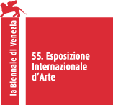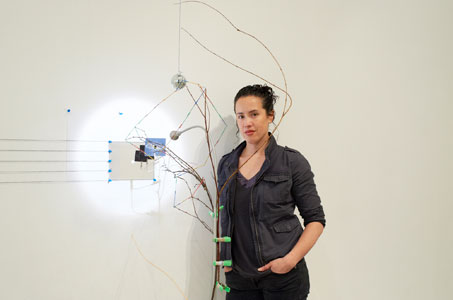 |
||||
|
||||
|
||||
ARTEXT : La Biennale di Venezia
Sarah Sze: TRIPLE POINT
Al centro della mostra è la nozione di 'bussola' e come noi ci situiamo in un mondo perennemente disorientante, ha detto Sze. Ciascuna delle sale opera come un sito sperimentale, in cui gli oggetti tendono a diventare strumenti o montaggi per misurare o modellare la nostra posizione nello spazio e nel tempo. L'aspirazione a costruire modelli che catturino la complessità e l'impossibilità di quell'impresa, è il punto centrale dell'opera. Nella termodinamica, il termine 'triple point' designa una singolare combinazione di
temperatura in cui tutte le tre fasi di una sostanza (gassosa, liquida e solida) coesistono in
perfetto equilibrio. La triangolazione, cioé L'approccio di Sze al Padiglione è quello di un sito di osservazione e sperimentazione dal vivo; l'opera, la cui installazione è durata tre mesi, è stata creata per la maggior parte in situ. Parte dell'installazione è stata cancellata durante questo periodo, diventando, come dice Sze, resti archeologici di esperimenti falliti. Tracce del panorama urbano di Venezia, foto di pietre, materiali architettonici, biglietti del vaporetto, sono stati raccolti e aggiunti man mano che l'installazione veniva completata. Di conseguenza, gli oggetti appaiono instabili, con crescita virale e decadimento imminente in evidenza. Piccoli frammenti di sculture sono stati anche dispersi per i negozi e sui tetti intorno alla via Garibaldi, per essere scoperti per caso nel tessuto della vita quotidiana. La mostra occupa il Padiglione e la città, ne naviga le sale e le strade, si rintana in retrobottega, si aggrega in sistemi e infine degenera in residui.
- How does your work fit into the show's narrative? - There are a lot of cast and fabricated objects like bottles and take-out containers more than found objects like the multiple salt containers or the can of Goya beans.
- How do you decide what objects to use?
Curator : Carey Lovelace, Holly Block.
Web site:http://www.imamuseum.org/venice |
||||
Artext © 2013 |
